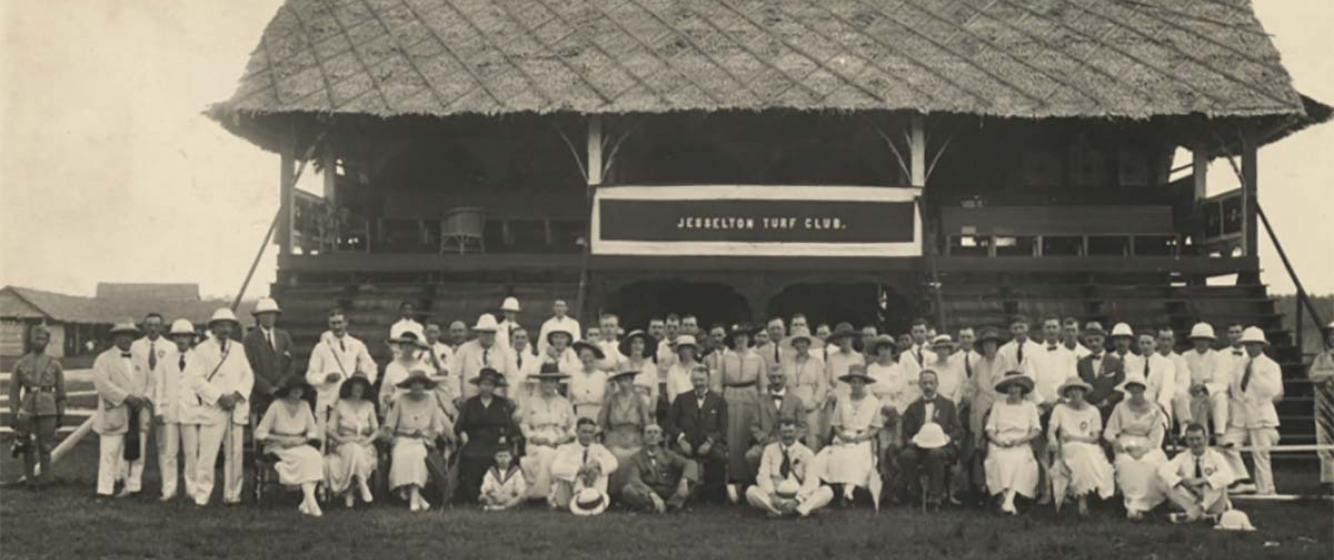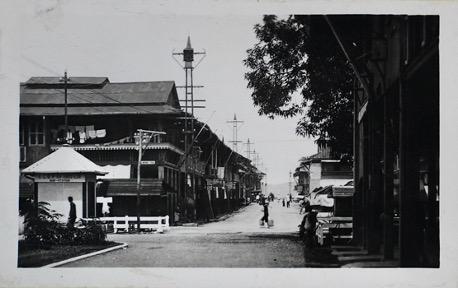
Urban Life on the Margins: Segregation in Sandakan and Jesselton, c. 1880s–1930s
What was life in small cities at the margins of empire like? The histories of Sandakan and Jesselton offer an insight into this question that broadens our understanding of colonial urbanism. They were the principal urban centres of British North Borneo – now the East Malaysian state of Sabah—which was considered “a remote corner of the Empire” even in the early 20th century. Despite their diminutive population relative to major Southeast Asian cities—recording no more than 25,000 people each – the two towns were vital interfaces between the Bornean interior and the world beyond. Located at the crossroads of East and Southeast Asia, Sandakan and Jesselton were home to various social groups, divided by class, ethnicity, and religion. In this colonial milieu, where racial discrimination was rife, Asians and Europeans created their own social worlds, with clear but pervious thresholds.
Within the structure of North Borneo’s economy, Sandakan and Jesselton were conventional extractive colonies that drained the territory’s natural resources. They were largely spaces created by and for non-indigenous people, with an ethnic division of labour that saw Asians—whether Chinese, Malay, or Javanese – working in diverse occupations, from lowly coolies to business owners and teachers, while Europeans worked almost exclusively in higher-paying occupations, such as the civil service or in commerce. However, because urban economic activity was largely oriented towards non-indigenous people – leveraging their connections with foreign capital, labour, and markets –indigenous participation was low. This was an ethnic division of labour that the North Borneo government encouraged. Since its founding, it had planned to develop Sabah through a combination of European corporate administration and Asian, specifically Chinese, labour and capital. In turn, these economic divisions reinforced the segregated nature of social life in the towns.
The prevalence of ethnic-based clubs and associations suggests that social discrimination and exclusion was a feature of urban life in Sandakan and Jesselton. After its opening in 1884, the Sandakan Club became the most prominent social institution for Europeans in North Borneo, hosting dinners, dances, and other events for its members. It was highly exclusive and, according to its rules, “Asiatics” and Eurasians were ineligible for membership. Likewise, the Jesselton Sports Club, sometimes abbreviated as the Jesselton Club, functioned in much the same way, serving as the nexus of European social life in its district. These associations and others like it, such as the towns’ golf clubs, formed a closed social world.

Jalan Tiga [Third Street], Sandakan, anonymous, c. 1930, The National Archives (UK), CO 1069/517/45.
Whether in response to or irrespective of these exclusions, various non-European communities created their own parallel institutions. As the largest ethnic group in the towns, the Chinese had numerous societies in Sandakan and Jesselton, ranging from clan associations to newspaper reading clubs. The oldest Chinese club in Sandakan was the Yi Lok Club, likely established in the 1880s or 1890s, which held dinners and events. In the 1930s, the leading Chinese club in Jesselton was the Yi Yi Club, which was located on the second floor of the local Chinese Chamber of Commerce. Its members – all ethnically Chinese – comprised shopkeepers, planters, and other eminent members of the community. Similarly, the Japanese community of Jesselton established a society in 1929 for their own social activities. From 1933, there was also the Jesselton Muslim Club, which organized teas and dinners for its members, who were presumably all followers of Islam. There thus existed an active and exclusive associational life for members of the non-European community. However, social groups without sufficient affluence or size – such as the Javanese or the Jews – did not have their own official clubs, as these institutions were expensive to establish and maintain.
Urban society in North Borneo was not entirely segregated, as there were spaces and times for different ethnic and social groups to interact. Certain associations, like the Sandakan Recreation Club and the Jesselton Recreation Club were open to males regardless of ethnicity or religion. These associations were meant for non-European employees of commercial firms and the government, although they suffered from poor membership. Restaurants and eateries were also sites of formal and informal interactions between different social groups. In Jesselton, tea shops were hubs of urban life, where Chinese, Malay, and indigenous peoples, such as the Bajau and the Dusun, exchanged local gossip and regional news over tea and cigarettes. Celebrations, festivals, and sports events also offered townspeople the opportunity of intermingling. From the 1880s to the 1930s, numerous European, Filipino, and indigenous peoples attended an annual Chinese New Year fair in Sandakan. Similarly, Christmas and Empire Day were publicly celebrated in the towns with parades and sports competitions involving individuals of different ethnicities.
Yet, even if Sandakanites and Jesseltonians from various social circumstances had opportunities to mingle, they may or may not have understood each other. Asians of higher status, especially those with some command of the English language, might have fraternized with each other and with Europeans regularly. However, there were relatively few of them. Even by 1931, only 9% and 15% of the populations in Sandakan and Jesselton, respectively, could speak English. There were also few Europeans who were fluent in Chinese topolects and Malay, which were the most common languages spoken.
Class, ethnicity, and language remained powerful categories of difference in small colonial cities. This form of urbanism in North Borneo had analogues elsewhere in the imperial world, especially Southeast Asia, where there were other multi-ethnic and segregated centres. The vaunted “cosmopolitanism” of these colonial cities might have been confined to more narrow segments of their populations than previously imagined. Far from being marginal, urban centres like Sandakan and Jesselton can offer new ways of reading the histories of their larger counterparts.
Michael Yeo
Assistant Professor, History Programme, Nanyang Technological University, Singapore
Add new comment